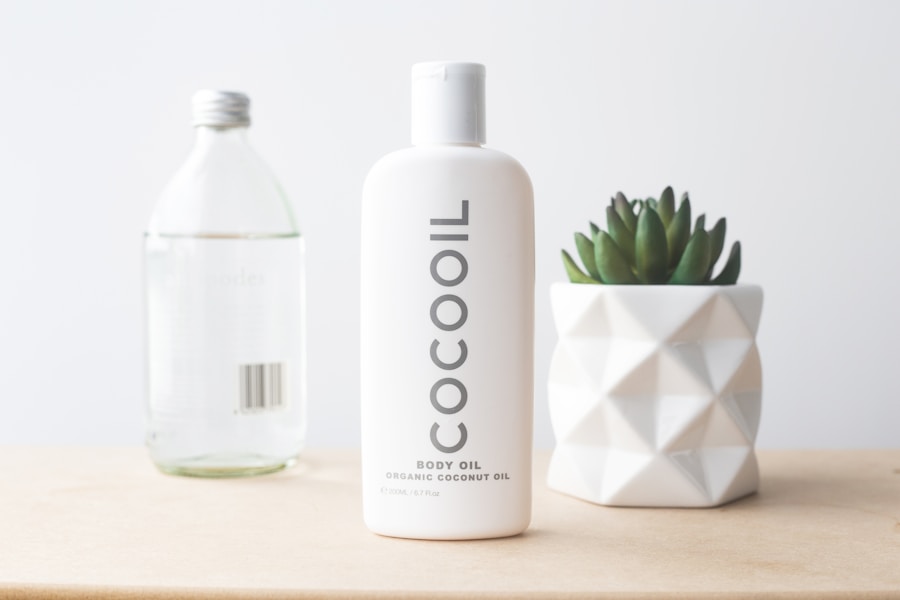Ingrown hairs, also known as razor bumps, occur when a hair grows back into the skin instead of rising up from it. This can happen when the hair follicle becomes clogged with dead skin cells, causing the hair to grow sideways or curl back into the skin. Ingrown hairs can be painful and unsightly, and they are a common problem for people who shave, wax, or pluck their hair. Some people are more prone to ingrown hairs than others, particularly those with curly or coarse hair. Ingrown hairs can also be caused by wearing tight clothing that rubs against the skin, as well as by using products that clog the pores. Understanding the causes of ingrown hairs is important for preventing and treating them effectively.
Ingrown hairs can be caused by a variety of factors, including genetics, hair texture, and grooming habits. People with curly or coarse hair are more likely to experience ingrown hairs because the hair is more likely to curl back into the skin as it grows. Shaving, waxing, and plucking can also contribute to ingrown hairs by causing the hair to grow back at an angle. Tight clothing and certain skincare products can also clog the pores and contribute to ingrown hairs. It’s important to understand the causes of ingrown hairs in order to take steps to prevent them and treat them effectively when they do occur.
The Benefits of Laser Hair Removal
Laser hair removal is a popular method for removing unwanted hair from the body. This procedure uses a laser to target and destroy the hair follicles, preventing them from growing back. There are many benefits to laser hair removal, including long-lasting results, reduced risk of ingrown hairs, and smoother skin. Unlike shaving or waxing, which only provide temporary results, laser hair removal offers permanent reduction in hair growth. This means that after a series of treatments, most people experience a significant reduction in the amount of hair that grows back. Laser hair removal also reduces the risk of ingrown hairs, as it targets the hair follicles directly and prevents them from growing back. This can result in smoother, clearer skin without the irritation and discomfort of ingrown hairs.
In addition to long-lasting results and reduced risk of ingrown hairs, laser hair removal offers other benefits as well. Many people find that their skin looks and feels smoother after laser hair removal, as the procedure can help to reduce the appearance of razor bumps and other skin irritations. Laser hair removal is also a quick and convenient option for removing unwanted hair, as it can be performed on almost any area of the body. This makes it a popular choice for people who want to save time and effort on their grooming routine. Overall, laser hair removal offers a range of benefits for those looking to achieve smooth, hair-free skin.
Importance of Aftercare in Preventing Ingrown Hairs
Aftercare is an important part of preventing ingrown hairs after any hair removal procedure, including laser hair removal. Proper aftercare can help to keep the skin clean and healthy, reducing the risk of ingrown hairs and other skin irritations. After laser hair removal, it’s important to keep the treated area clean and moisturized to promote healing and prevent ingrown hairs from forming. This may involve using gentle cleansers and moisturizers that are free from harsh chemicals and fragrances. It’s also important to avoid picking or scratching at the treated area, as this can cause irritation and increase the risk of ingrown hairs.
In addition to keeping the skin clean and moisturized, aftercare for laser hair removal may also involve avoiding certain activities that can irritate the skin. This may include avoiding hot baths or showers, swimming in chlorinated water, or using harsh exfoliants on the treated area. It’s also important to protect the skin from sun exposure by wearing sunscreen and protective clothing. By following these aftercare guidelines, it’s possible to reduce the risk of ingrown hairs and other skin irritations after laser hair removal.
Proper Post-Laser Hair Removal Care
After undergoing laser hair removal, it’s important to take proper care of the treated area to promote healing and reduce the risk of complications. This may involve using gentle cleansers and moisturizers to keep the skin clean and hydrated. It’s also important to avoid picking or scratching at the treated area, as this can cause irritation and increase the risk of ingrown hairs. In addition to keeping the skin clean and moisturized, it’s important to avoid activities that can irritate the skin, such as hot baths or showers, swimming in chlorinated water, or using harsh exfoliants.
Proper post-laser hair removal care also involves protecting the skin from sun exposure by wearing sunscreen and protective clothing. Sun exposure can increase the risk of complications after laser hair removal, so it’s important to take steps to protect the skin from UV rays. It’s also important to follow any specific aftercare instructions provided by your healthcare provider, as these may vary depending on the type of laser used and the area treated. By taking proper care of the treated area after laser hair removal, it’s possible to promote healing and reduce the risk of complications.
Tips for Minimizing the Risk of Ingrown Hairs
There are several tips for minimizing the risk of ingrown hairs after any hair removal procedure, including laser hair removal. One important tip is to exfoliate regularly to remove dead skin cells that can clog the pores and contribute to ingrown hairs. This may involve using a gentle exfoliating scrub or a washcloth to gently slough away dead skin cells. It’s also important to keep the skin clean and moisturized to prevent ingrown hairs from forming. This may involve using gentle cleansers and moisturizers that are free from harsh chemicals and fragrances.
Another tip for minimizing the risk of ingrown hairs is to avoid wearing tight clothing that can rub against the skin and contribute to irritation. It’s also important to avoid picking or scratching at the skin, as this can cause irritation and increase the risk of ingrown hairs. By following these tips, it’s possible to reduce the risk of ingrown hairs after laser hair removal and other hair removal procedures.
Common Mistakes to Avoid After Laser Hair Removal
There are several common mistakes to avoid after laser hair removal in order to reduce the risk of complications and promote healing. One common mistake is exposing the treated area to sun without protection, as this can increase the risk of complications such as hyperpigmentation or burns. It’s important to wear sunscreen and protective clothing to protect the skin from UV rays after laser hair removal. Another common mistake is using harsh exfoliants or picking at the treated area, as this can cause irritation and increase the risk of ingrown hairs.
It’s also important to avoid activities that can irritate the skin after laser hair removal, such as hot baths or showers, swimming in chlorinated water, or using harsh exfoliants. By avoiding these common mistakes, it’s possible to reduce the risk of complications after laser hair removal and promote healing.
Seeking Professional Advice for Aftercare in Laser Hair Removal
After undergoing laser hair removal, it’s important to seek professional advice for aftercare in order to promote healing and reduce the risk of complications. Your healthcare provider can provide specific aftercare instructions based on your individual needs and the type of laser used. This may involve using gentle cleansers and moisturizers, avoiding certain activities that can irritate the skin, and protecting the skin from sun exposure.
Your healthcare provider can also provide guidance on how to minimize the risk of ingrown hairs after laser hair removal, such as exfoliating regularly and avoiding tight clothing that can contribute to irritation. By seeking professional advice for aftercare in laser hair removal, it’s possible to promote healing and reduce the risk of complications. Your healthcare provider can also address any concerns or questions you may have about aftercare in order to ensure a successful outcome from your laser hair removal treatment.






